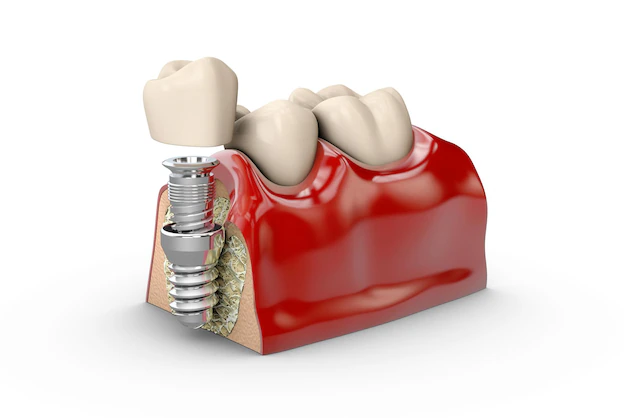An Overview Of Dental Implants: Varieties And Applications
Dental implants have revolutionized the field of dentistry by providing a durable and practical solution to tooth loss, thereby significantly enhancing the quality of life for people with missing teeth. The implants allow patients to regain not only their oral function but also their confidence and overall well-being.
This article looks at the world of dental implants, aiming to throw some light on the various types of dental implants available and their applications. The goal here is to help readers better appreciate dental implants as a form of prosthetics that positively impacts not only oral health but also the overall quality of life and well-being of those who require their use.
Endosteal Implants
Endosteal implants are the most common among dental implants, and they are widely used in the dental health community. These implants are surgically inserted directly into the jawbone, creating a robust foundation for the integration of artificial teeth.
Typically crafted from titanium for its biocompatibility and strength, endosteal implants closely fit the structure of a natural root of a tooth. This characteristic not only ensures stability but also contributes to a long-lasting solution for individuals needing the replacement of one or more teeth.
The versatility of endosteal implants makes them very useful for various cases of tooth replacement. Their adaptability is seen in applications ranging from single crowns to bridges and even as a supporting structure for full dentures.
The stable nature of endosteal implants makes them the best choice not only in restoring the aesthetic appeal of a patient’s smile but also in bringing back the full functionality of their oral cavity. These qualities make endosteal implants more acceptable in modern implant dentistry, where precision and reliability are very important.
Subperiosteal Implants
Subperiosteal implants are used as a viable alternative for individuals facing challenges related to insufficient bone height or bone density issues, which makes endosteal implants not a good option for them. Unlike endosteal implants which are surgically embedded within the jawbone, subperiosteal implants are strategically positioned on top of the jawbone beneath the gum tissue.
This innovative approach involves the fabrication of a meticulously tailored metal framework that conforms to the unique contours of the patient’s jaw, ensuring a stable foundation for the subsequent attachment of artificial teeth.
One distinctive advantage of subperiosteal implants lies in their suitability for individuals experiencing bone resorption issues. By circumventing the need for bone grafting procedures, this type of implant streamlines the treatment process and offers a more accessible option for those with compromised bone density. The use of subperiosteal implants extends to individuals requiring multiple teeth replacements, making them a practical choice for comprehensive dental restoration.
This type of implant also proves beneficial for patients who may find traditional removable dentures uncomfortable or inconvenient, as subperiosteal implants provide a fixed and secure solution for enhanced comfort and functionality.

Transosteal Implants
Transosteal implants, though less common than endosteal and subperiosteal implants, offer another viable option for individuals with specific dental needs. With this type of implant, a metal plate or frame is surgically positioned beneath the jawbone, securing the artificial teeth in place. While transosteal implants offer stability, they are usually reserved for patients with unique anatomical considerations, or those who have experienced severe bone loss.
The placement of transosteal implants is more invasive compared to other types, making them a less common choice in contemporary implant dentistry. However, for select cases, transosteal implants provide a valuable alternative to address complex dental challenges.
Immediate Load Implants
Traditionally, dental implant procedures involve a waiting period between implant placement and the attachment of artificial teeth. However, with advancements in implant technology, immediate load implants, also known as same-day implants are now the popular choice. This innovative approach allows for the placement of a temporary crown or denture on the same day as implant surgery.
Immediate-load implants are suitable for carefully selected cases where the implant and bone integration are expected to be strong enough to support immediate loading. This type of implant not only reduces the overall treatment time but also enhances the patient’s experience by minimizing the waiting period for tooth restoration.
Conclusion
The field of dental implants has witnessed remarkable advancements, offering a range of options to address various dental challenges. Endosteal implants remain the standard, providing a reliable solution for single and multiple tooth replacements. Subperiosteal implants offer an alternative for patients with insufficient bone height, while transosteal implants cater to unique anatomical considerations.
The emergence of immediate load implants reflects the ongoing pursuit of improving patient outcomes and experience in implant dentistry. Each type of implant has its distinct advantages and considerations and a thorough evaluation by a qualified dental professional is needed in determining the most appropriate choice for individual cases.
As implant technology continues to evolve, the future holds promise for even more innovative solutions, further enhancing the effectiveness and accessibility of dental implants for people seeking to restore their smiles and oral function.
Read Also:
- 4 Ways To Take Care Of Your Dental Health
- The Art Of Dental Implants: A Comprehensive Guide For Potential Patients
- eDentistry: Navigating The Online Landscape For Dental Practice Expansion



